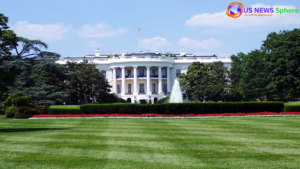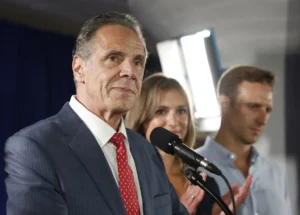Trump Declares ‘Liberation Day’ — Major Tariffs Announced to Reclaim U.S. Economic Independence.
On April 2, 2025, former President Donald Trump announced sweeping import tariffs under a newly declared “Liberation Day.” This aggressive move is designed to protect American industries, reduce trade deficits, and shift the U.S. back to manufacturing self-reliance.
This blog explains what Liberation Day means, how it affects trade, the reasoning behind it, and what Americans can expect.
Table of Contents
What Is “Liberation Day”? Understanding Trump’s Economic Emergency Declaration
Liberation Day is a symbolic declaration marking the beginning of Trump’s plan to transform U.S. trade policy. By leveraging emergency powers, he imposed tariffs on all imports into the U.S., aiming to boost American manufacturing and reduce dependency on foreign goods.
Purpose:
- Protect U.S. jobs and industry
- Cut rising trade deficits
- Challenge countries exploiting U.S. markets
Trade deficit in 2024: $961 billion — the highest in U.S. history
Manufacturing jobs lost since 2000: Over 6 million
Why Trump Chose Now: The Strategic Timing Behind Liberation Day
Trump’s move is not random. It’s politically calculated ahead of the 2026 midterms and also a response to economic threats like inflation, supply chain breakdowns, and overreliance on China.
Why Liberation Day Was Declared
Behind Liberation Day
├── Election Strategy (2026 midterms)
├── Rebuild Domestic Jobs
├── Trade Deficit Crisis
├── Supply Chain Nationalism
└── Economic Independence
This timing allows Trump to reassert economic leadership while appealing to working-class American voters hit hardest by outsourcing.
New Tariffs Breakdown: What Goods Are Targeted and What Changes for You
Trump’s policy imposes a 10% base tariff on all imports and higher rates for select countries with trade imbalances. These changes will affect products from China, Mexico, Germany, and others.
| Category | Tariff Rate | Examples Affected |
|---|---|---|
| Universal Base Tariff | 10% | All imports – electronics, clothes, tools |
| Strategic Trade Deficit Nations | 15–35% | China, Mexico, Vietnam |
| Essential Goods Priority | 0% or delayed | Medical supplies, defense components |
Consumers may soon pay more for imported goods, but local businesses are expected to benefit.
How the World Is Reacting to Trump’s Tariffs
Global governments and trade organizations have responded quickly — and not favorably. Many U.S. allies and trade partners see the tariffs as a form of economic aggression.
Top Global Reactions:
- European Union: Accused the U.S. of violating WTO rules
- China: Threatened counter-tariffs on American agriculture
- Mexico & Canada: Urging renegotiations, warning of supply chain impacts
- WTO: Under pressure to intervene or mediate
These tensions could escalate into global trade wars or diplomatic rifts.
Trump’s Goals Behind the Tariff Move: What He’s Hoping to Achieve
Trump’s administration framed the tariffs as part of a five-part strategy to rebuild America’s economy.
🇺🇸 Trump’s 5 Economic Goals:
- Reshore Jobs – Bring back U.S. manufacturing
- Cut the Trade Gap – Stop sending billions overseas
- Strengthen Supply Chains – Secure pharmaceuticals, electronics
- Boost National Security – End reliance on foreign tech
- Leverage Negotiations – Pressure nations into fairer trade deals
Example: 90% of U.S. antibiotics are imported from China — a key reason for prioritizing pharmaceutical independence.
What This Means for the U.S. Economy: Market Reactions and Consumer Impact
Markets responded with volatility. Prices on imported goods are expected to rise, and economists predict short-term inflation as businesses adjust.
Market Impact Data:
- Dow Jones dropped 2.4% the day of announcement
- Consumer inflation projection: +3–5% in 90 days
- Retailers like Best Buy and Walmart expect delayed shipments and higher prices
What will cost more?
Electronics, apparel, auto parts, kitchen appliances — anything made overseas
However, American factories and suppliers may benefit from the new demand.
Could This Help American Workers in the Long Run?
That’s the big question. Some economists believe this will eventually revive U.S. industry, while others warn it could hurt consumers too much.
Potential Benefits:
- More factory jobs
- Stabilized local supply chains
- Stronger domestic control over key industries
Possible Downsides:
- Trade retaliation
- Short-term price hikes
- International diplomatic strain
Pre vs Post-Tariff Scenario
| Aspect | Before Liberation Day | After Liberation Day |
|---|---|---|
| Import Tariffs | 0–5% on most goods | 10% minimum, up to 35% |
| Consumer Prices | Stable | Expected to rise short term |
| U.S. Manufacturing Jobs | Declining | Predicted to increase |
| Trade Relations | Cooperative | Strained |
| Supply Chain Dependency | Heavy reliance on China | Focus on U.S.-based sourcing |
Conclusion: A Historic Shift in U.S. Trade Policy
Trump’s declaration of Liberation Day and the new tariffs mark one of the most dramatic shifts in American economic strategy in decades. Whether this move brings long-term success or short-term strain remains to be seen — but one thing is clear: it has already reshaped how the world views U.S. trade leadership.
If successful, this could lead to a manufacturing revival, economic independence, and political leverage. If it backfires, the risks include price hikes, trade wars, and global instability.
[USnewsSphere.com / wt.]





